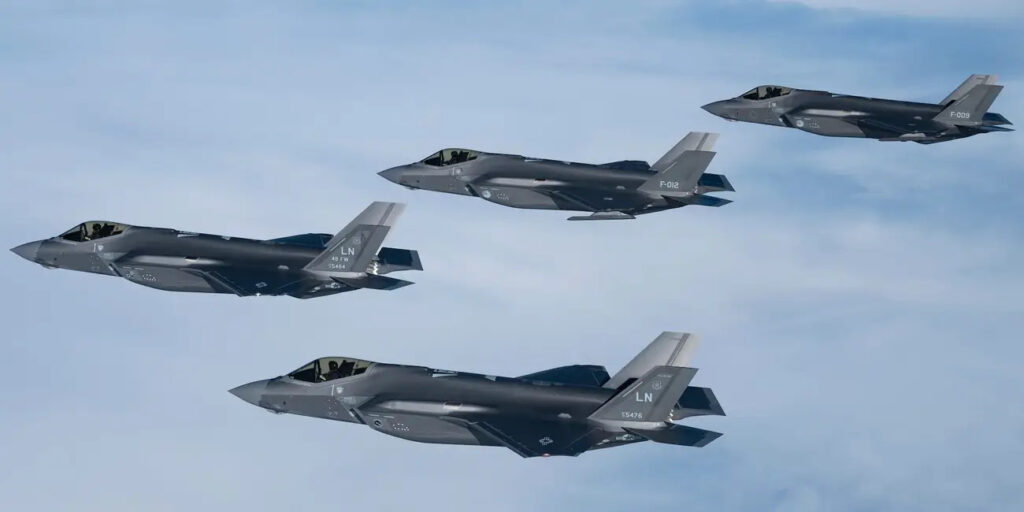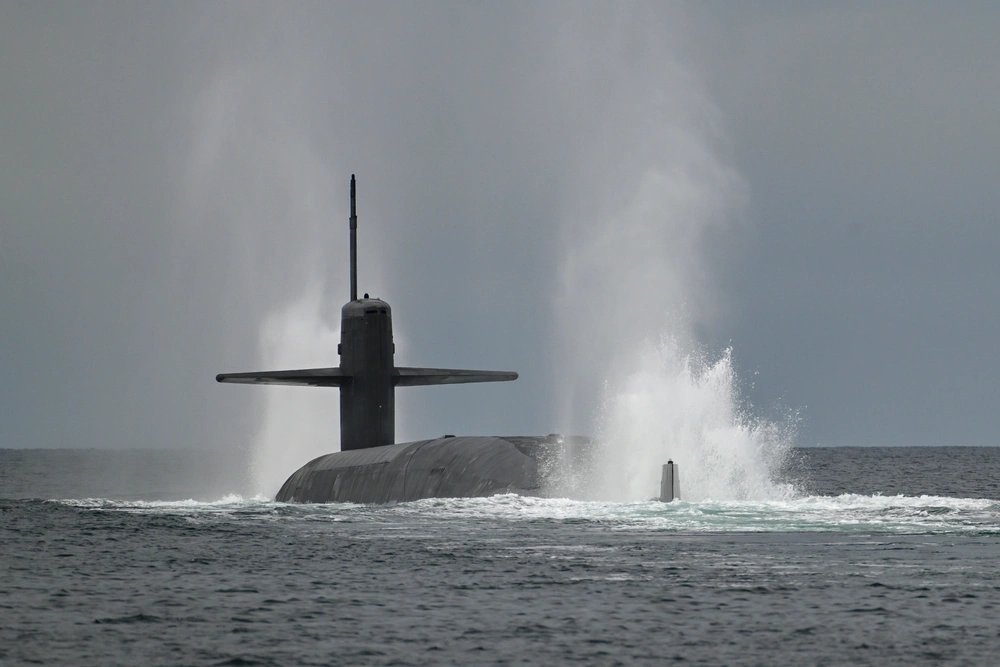For NATO pilots trained to fly MiGs, learning to fly the F-35 ‘is far too much to grasp,’ former F-35 test pilot says
- By Business Insider
Share This Article

This article by Constantine Atlamazoglou was originally published by Business Insider.
The F-35 is fast becoming the fighter jet of choice for many European air forces due to its technological and operational advantages over other available airframes.
Eight European countries either operate the fifth-generation fighter jet or have placed orders for it. More countries are in discussions to acquire the jet in the near future.
The increasing number of F-35s in Europe means more pilots will have to learn to fly the jet, but the F-35’s technological superiority means some pilots, especially those trained to operate Soviet-made aircraft, likely won’t be able to make the change.
A generational jump

Among NATO’s 30 members, only Bulgaria, Poland, and Slovakia still operate Soviet-era aircraft.
Of those three, Poland has the most, with 23 operational MiG-29s and 12 operational but obsolescent Su-22s. The rest of Poland’s combat fleet is made up of 36 US-made F-16s. In 2020, in an effort to modernize its air force, Warsaw ordered 32 F-35As, and it has an option to buy 16 more.
The mix of Western-made and Soviet-origin aircraft reflects Poland’s political history as a member of the Warsaw Pact during the Cold War and now as a member of NATO and the EU.
Yet that mix will also make it harder for Poland to integrate the F-35 into its fleet, according to Billie Flynn, a former Canadian air force lieutenant colonel and senior F-35 test pilot.

In an interview with the Aviationist, Flynn explained how Polish pilots will struggled to move between those different aircraft.
“There’s very much the Russian, Eastern Bloc mentality [vs.] the Western F-16 cadre” in the Polish Air Force, and the pilots in each cadre do not cross between them, Flynn said.
Flynn said any pilot would face a “leap” in transitioning to the F-35, one of only four fifth-generation jets in operation around the world.
F-16 pilots, or the Western cadre, in the Polish Air Force would be able to transition to the newer jet, as many pilots in other air forces with the F-35 have done, but the Polish Air Force’s “Eastern Bloc” of pilots won’t be as fortunate, Flynn added.
Asking even a very capable MiG-29 pilot “to transition to this cosmic spaceship is far too much to grasp,” Flynn said, referring to the F-35.
Differences in mentality

Photo by Wojtek Radwanski/Business Insider via AFP via Getty Images)
The F-16 and the MiG-29 are comparable in terms of capabilities.
Although the MiG-29 is primarily an air-superiority fighter and the F-16 a multi-role aircraft, both are fourth-generation fighters. The Soviet jet was in fact built as a response to the American F-16 and F-15.
But transitioning from that Soviet-made jet to modern US fighters requires more than learning new capabilities. It also requires adjusting to a totally different design philosophy, which makes such a transition practically impossible, according to Flynn.
“Every part of how we mechanize the aircraft in the West is different from how Russians design their aircraft, every part of philosophy of how you fly an airplane, how you design cockpits, how you process information is different,” Flynn told the Aviationist.
In contrast, it’s easier for an F-16 pilot to switch to the F-35 — both of which are designed and built by Lockheed Martin — as the stealth fighter is a “logical step forward,” Flynn said.
“To say to an F-16 pilot, hey, we’re Lockheed Martin, and we build the aircraft [a] certain way, and switches [a] certain way, and now we’re going to give you the next generation of that, there’s a logic flow of our design, of the F-16, as the baseline, that kind of looks like what the F-35 is,” Flynn said. “That does not exist for the MiG cadre.”
The last of their kind

(Photo by Airman 1st Class Zachary Wright/US Air Force)
The inability of MiG-29 pilots to make the jump to the new era is a sign of their aircraft’s approaching obsolescence.
Poland, Bulgaria, and Slovakia already struggle to keep their MiG-29s up to date. Poland has maintained its MiG-29 contingent on par with its F-16, but as time and worsening relations with Russia make replacement airframes and machine parts harder to find, the last three NATO MiG-29 operators are slowly phasing out the aircraft.
“I think the [Polish] MiG cadre will end up atrophying, spending their time in that jet until the MiG-29 phases out,” Flynn said.
With militaries embracing of the F-35 and other advanced jets, “there is no place for the MiG-29 pilots in the sophisticated world of” fifth-generation aircraft, he added.
Read more from Business Insider
- Russian troops in Ukraine have suffered as many deaths as the entire 9-year Afghan war that contributed to the USSR’s collapse
- The US defense secretary says that the goal is to see Russia weakened
- As fighting rages in Ukraine, Europeans are trying to root out Russian spies
- US startups donate drones after Ukrainian officials raise concerns over use of Chinese devices
- Ukraine now has more tanks on the ground than Russia does, US defense official says
Related Posts
Sandboxx News Merch
-

‘AirPower’ Classic Hoodie
$46.00 – $48.00Price range: $46.00 through $48.00 Select options This product has multiple variants. The options may be chosen on the product page -

‘Sandboxx News’ Trucker Cap
$27.00 Select options This product has multiple variants. The options may be chosen on the product page -

‘Kinetic Diplomacy’ Bumper Sticker (Black)
$8.00 Add to cart
Business Insider
Related to: Airpower

New advances in submarine detection could upend nuclear deterrence as we know it
Sandboxx News
-

‘Sandboxx News’ Trucker Cap
$27.00 Select options This product has multiple variants. The options may be chosen on the product page -

‘AirPower’ Classic Hoodie
$46.00 – $48.00Price range: $46.00 through $48.00 Select options This product has multiple variants. The options may be chosen on the product page -

‘AirPower’ Golf Rope Hat
$31.00 Select options This product has multiple variants. The options may be chosen on the product page -

‘Sandboxx News’ Dad Hat
$27.00 Select options This product has multiple variants. The options may be chosen on the product page
